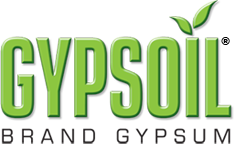Research Library
Search for research reports and other technical information related to agricultural gypsum application. Type a key word to narrow your search.
The Effect of Exchangeable Sodium and Gypsum on Surface Runoff from Loess Soil
| Source Publication: | Soil Science Society of America Journal Vol. 47 No. 5, p. 1001-1004 |
|---|---|
| Primary Author: | Keren, Shainberg, Frenkel, Kalo |
| State: | Israel |
| Date/Year: | 1983 |
| Focus: | Erosion, infiltration, soil remediation |
| Category: | Peer Reviewed Papers |
| Crop: | Not Crop Specific |
| Reported Results: | The exchangeable sodium percentage (ESP) of the soil was found to have a very pronounced effect on the surface runoff in spite of the fact that the final infiltration rate of the soil was affected only slightly by the ESP of the soil. The effect of ESP on the percent of surface runoff is probably through its effect on the rate of crust formation. The percent of surface runoff increased during the rainy season, for both ESP levels, because the runoff from already crusted soil was higher. However, the effect of consecutive storms depended on the degree of drying between storms. Application of industrial gypsum was found to be very effective in lowering surface runoff from the soil. Spreading the gypsum over the soil was more effective than mixing it in the upper 10 cm of soil by disk. Localization of the gypsum at the soil surface, where crust is formed, explains this effect. Gypsum application lowered the ESP of the upper 10-cin layer for both gypsum treatments. Since the ESP of the soil in both gypsum treatments was about the same, it seems that the most important factor which controlled infiltration was the electrolyte concentration in the percolating solution. Please click here for full article.
|

